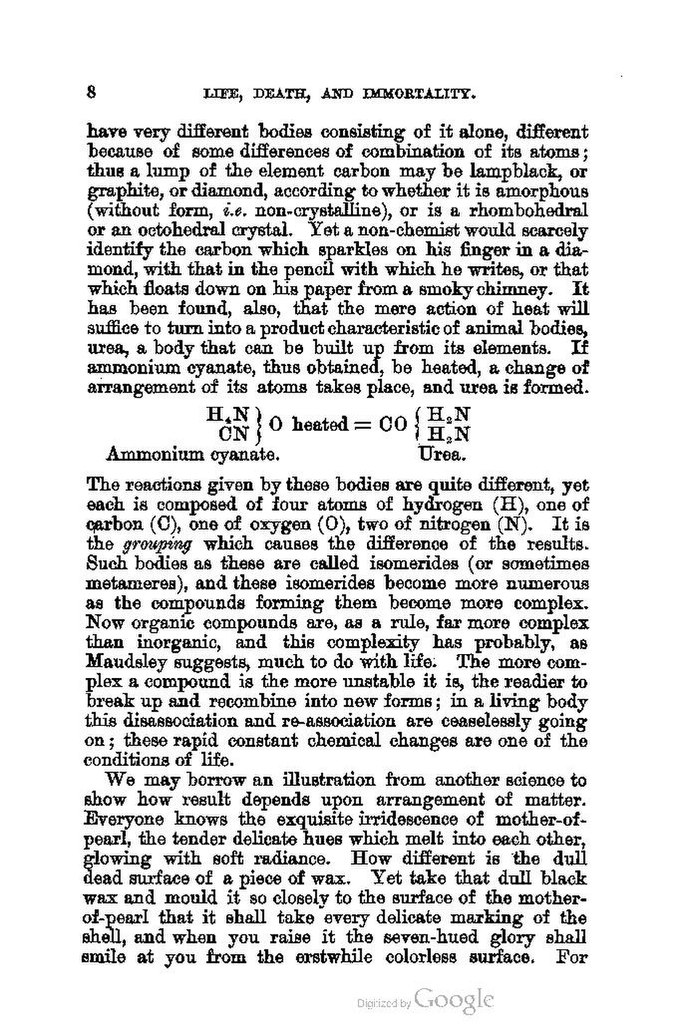have very different bodies consisting of it alone, different because of some differences of combination of its atoms; thus a lump of the element carbon may be lampblack, or graphite, or diamond, according to whether it is amorphous (without form, i.e. non-crystalline), or is a rhombohedral or an octohedral crystal. Yet a non-chemist would scarcely identify the carbon which sparkles on his finger in a diamond, with that in the pencil with which he writes, or that which floats down on his paper from a smoky chimney. It has been found, also, that the mere action of heat will suffice to turn into a product characteristic of animal bodies, urea, a body that can be built up from its elements. If ammonium cyanate, thus obtained, be heated, a change of arrangement of its atoms takes place, and urea is formed.
| H4N | O heated = CO | H2N | |||
| CN | H2N | ||||
| Ammonium cyanate. | Urea. | ||||
The reactions given by these bodies are quite different, yet each is composed of four atoms of hydrogen (H), one of carbon (C), one of oxygen (O), two of nitrogen (N). It is the grouping which causes the difference of the results. Such bodies as these are called isomerides (or sometimes metameres), and these isomerides become more numerous as the compounds forming them become more complex. Now organic compounds are, as a rule, far more complex than inorganic, and this complexity has probably, as Maudsley suggests, much to do with life. The more complex a compound is the more unstable it is, the readier to break up and recombine into new forms; in a living body this disassociation and re-association are ceaselessly going on; these rapid constant chemical changes are one of the conditions of life.
We may borrow an illustration from another science to show how result depends upon arrangement of matter. Everyone knows the exquisite irridescence of mother-of-pearl, the tender delicate hues which melt into each other, glowing with soft radiance. How different is the dull dead surface of a piece of wax. Yet take that dull black wax and mould it so closely to the surface of the mother-of-pearl that it shall take every delicate marking of the shell, and when you raise it the seven-hued glory shall smile at you from the erstwhile colorless surface. For
